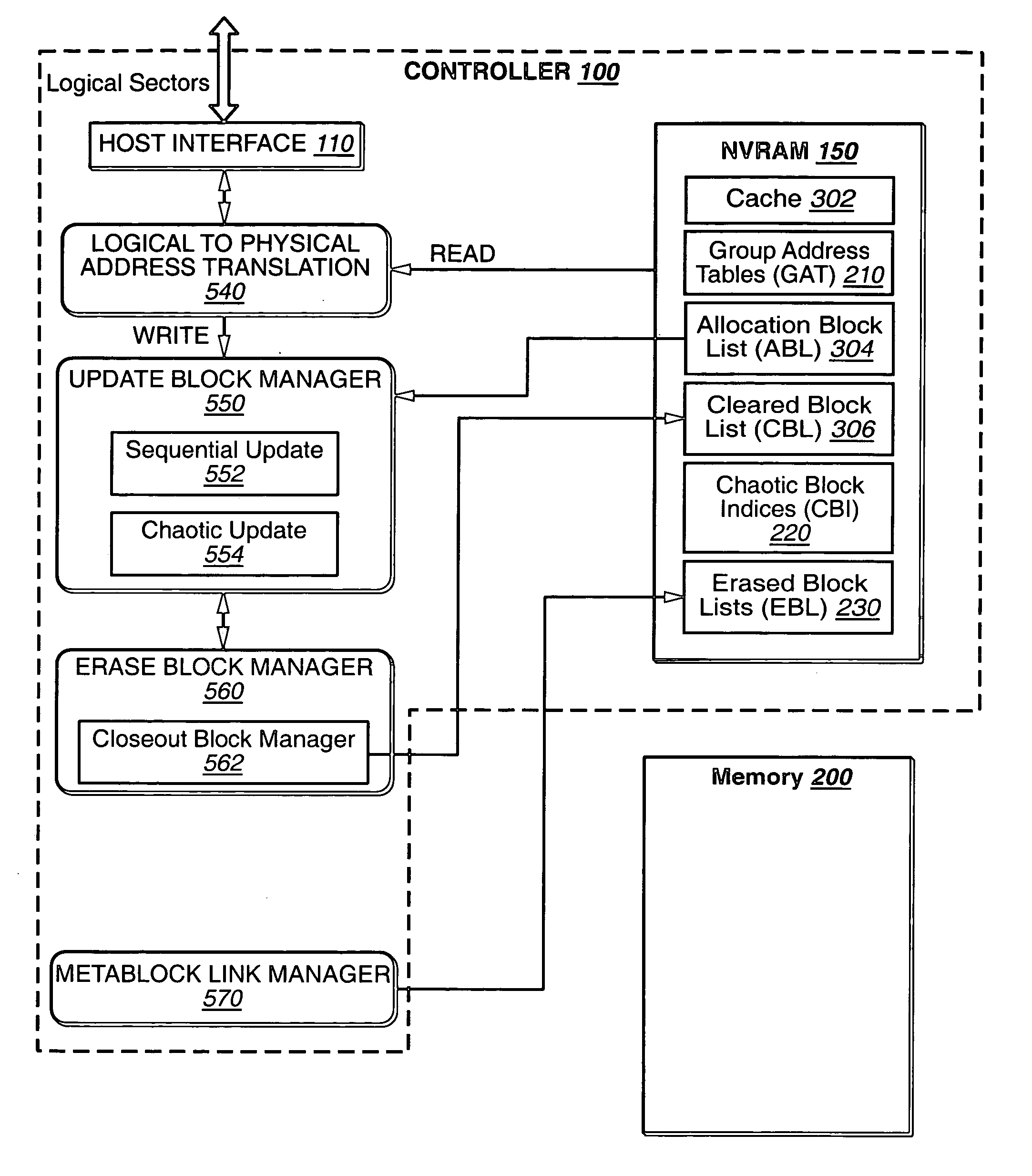Hybrid non-volatile memory system
a memory system and hybrid technology, applied in the direction of memory adressing/allocation/relocation, instruments, input/output to record carriers, etc., can solve the problems of high overhead, inefficient method of update, and high frequency of erase recycling of memory blocks, so as to achieve the effect of facilitating access more quickly
- Summary
- Abstract
- Description
- Claims
- Application Information
AI Technical Summary
Benefits of technology
Problems solved by technology
Method used
Image
Examples
Embodiment Construction
Hybrid Nonvolatile Memory Systems
[0026] The present invention presents nonvolatile memory systems using the various memory technologies. In a principle aspect of the present invention, two different non-volatile memory technologies are used in order to exploit their relative advantages with respect to each other. An exemplary embodiment is a memory system having a controller portion and a memory portion, where the memory portion for the storage of user data is based on a flash EEPROM technology and the controller includes a non-volatile memory from another non-volatile technology, such as FeRAM, for the storage of control and data management information.
[0027]FIG. 1 is a block diagram showing a memory system 20 connected to a host 10. The memory system may be detachable from the host, as in the case of a memory card, or embedded in the host. The memory system 20 includes the non-volatile, here flash, memory 200 for the storage of user data and the controller 100 for the managemen...
PUM
 Login to View More
Login to View More Abstract
Description
Claims
Application Information
 Login to View More
Login to View More - R&D
- Intellectual Property
- Life Sciences
- Materials
- Tech Scout
- Unparalleled Data Quality
- Higher Quality Content
- 60% Fewer Hallucinations
Browse by: Latest US Patents, China's latest patents, Technical Efficacy Thesaurus, Application Domain, Technology Topic, Popular Technical Reports.
© 2025 PatSnap. All rights reserved.Legal|Privacy policy|Modern Slavery Act Transparency Statement|Sitemap|About US| Contact US: help@patsnap.com



